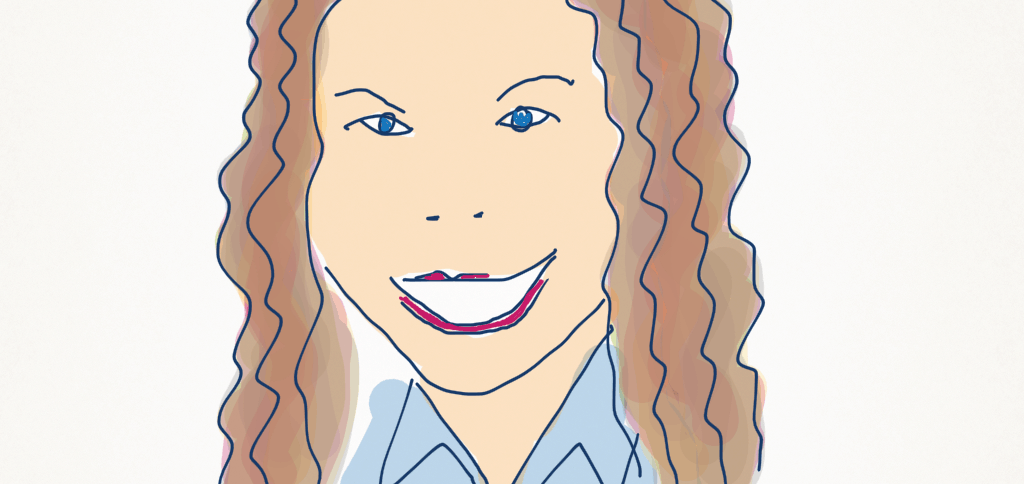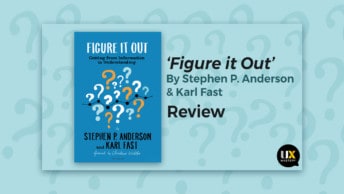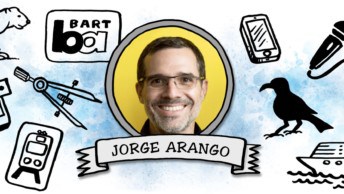This coming August, the UX Australia conference will be held in Brisbane. One of the presenters, Jessica Enders, took a few minutes to chat with desktop about how she came to a career in UX, the state of UX design in Australia, and what we can expect from her workshop.
Give us a rundown of how you came to work as a user experience practitioner, what it is you do, and what you love about it.
For the first 10 years of my working life I continued the path set at university: doing what I was good at because I wasn’t sure what I actually wanted to do. I was good at maths, logic, computer science, psychology. It was when a magnificent book called I Could Do Anything If I Only Knew What It Was fell into my hands that I realised my passion had always been for making usable forms. Whether I was temping at a doctor’s surgery or developing surveys for the Australian Bureau of Statistics, the design of the form – or whatever instrument that was used to collect data – was the bit that I loved by far the most.
That led me to explore what options were out there, and I discovered that there was a field called User Experience. I’d always thought the world needed this field but didn’t have it. To me, that “invisibility” is a sign of how young the field is.
I worked for about two years as a senior interaction designer at The Hiser Group but when I was being urged away from forms into more generalisation, I thought the time was ripe to try doing purely forms in a business of my own. I started Formulate Information Design in 2007, so it’s coming up to five years now.
People think I’m crazy to want to design forms. It’s as if I’m aspiring to be a garbage collector. But forms are actually so rich in so many different interesting areas: from sociology to linguistics; from business process engineering to visual perception. I’d dare any current or prospective UXer to find a more challenging, engaging and rewarding specialisation.
Every now and then we see passionate blog posts pop up, bemoaning the use of “UX” as a discipline and arguing that everyone involved in making a product should be thinking about the user experience, not just the “UX designer”. What are your thoughts on this?
To my mind, all design should be about creating great experiences. Otherwise, I say it’s art, not design. And let me be clear: a “great experience” means everything from pleasing aesthetics, to comfort, to functionality, to emotional engagement, to cost effectiveness and more, all of which applies to every stakeholder, not just the end users.
So I guess I’m in some agreement with those blog posts, but I also think the reality is that we can’t get (true) design to be a norm without first going through the period of establishing the field of user experience, with widespread recognition and influence. I’m deliberately using different terms because I think somewhere along the line user experience and design will need to come together. For as long as a chair can win a design award when you can’t actually sit in it for more than two minutes, I say we have a problem. Of course, I know there’s a whole design establishment with which I’m probably at odds by holding this view, but I guess that’s part of what makes me a passionate user advocate.
What’s your take on the state of user experience design in Australia, compared to the rest of the world?
Jon Kolko did a closing keynote at UX Australia last year and it was great to hear his enthusiasm and insight. One of his key points was that user experience “has arrived.” Maybe, when you’re doing projects with some very forward-thinking US corporates – who are naturally going to be attracted to a charismatic ‘rockstar’ of the field like Jon – it may seem like UX has made it. But I get the impression that no matter where in the world you are, down in the trenches, UX most certainly is not a default part of the conversation nor a frequent – let alone consistent – holder of power in the organisational hierarchy. I don’t mean to sound negative; I just think we’ve got a way to go yet before we have the influence that we should have.
Interestingly, some of the best and most effective form designers are here in Australia, with our North American counterparts lingering behind. Partially that’s because we’re less hamstrung by legislation here in Australia, partly I think it’s because we were graced by a wonderful leader in the late Rob Barnett. But even here in Australia we are still just a clutch of people trying to get heard by business and governments alike. After all, when was the last time you had a seamless form-filling experience?
What tips would you give to a print designer who was interested in transitioning to a career as a UX designer?
I would imagine that good print designers already have:
- an appreciation of the interplay between form and function;
- an ability to work within constraints; and
- good organisational skills.
This is an excellent core for any UX designer. Add to that a deep willingness to understand people’s needs, desires, perceptions and opinions, together with solid communicate skills, and I think realistically you have all you need to learn to be a UX designer on-the-job. Just make sure you are in an environment of experience and collaboration.
Let us know what attendees to UX Australia can expect from your workshop.
Let me first be clear that when I say “forms”, I mean any tool for collecting data, be it on the web, the desktop or on paper.
Attendees can expect a meaty and fun day spent learning the secrets of creating forms that just work, pleasing form-fillers and form-owners alike. People who have attended my sessions in the past always comment – with a sparkle in their eyes – that from that point onwards, they will never look at a form the same way. My workshops are always hands-on, people get to talk about their own experience (both as users and designers), and we cover lots of immediately applicable design solutions. And it doesn’t matter what your background is: print or otherwise; I guarantee you’ll get something positive and worthwhile out of the experience.
UX Australia is a two-day conference about user experience design. It’s on at the Sofitel Brisbane Central from 30-31 August, 2012, and features a ton of local and international presenters. There are also two days of workshops on August 28 and 29.





